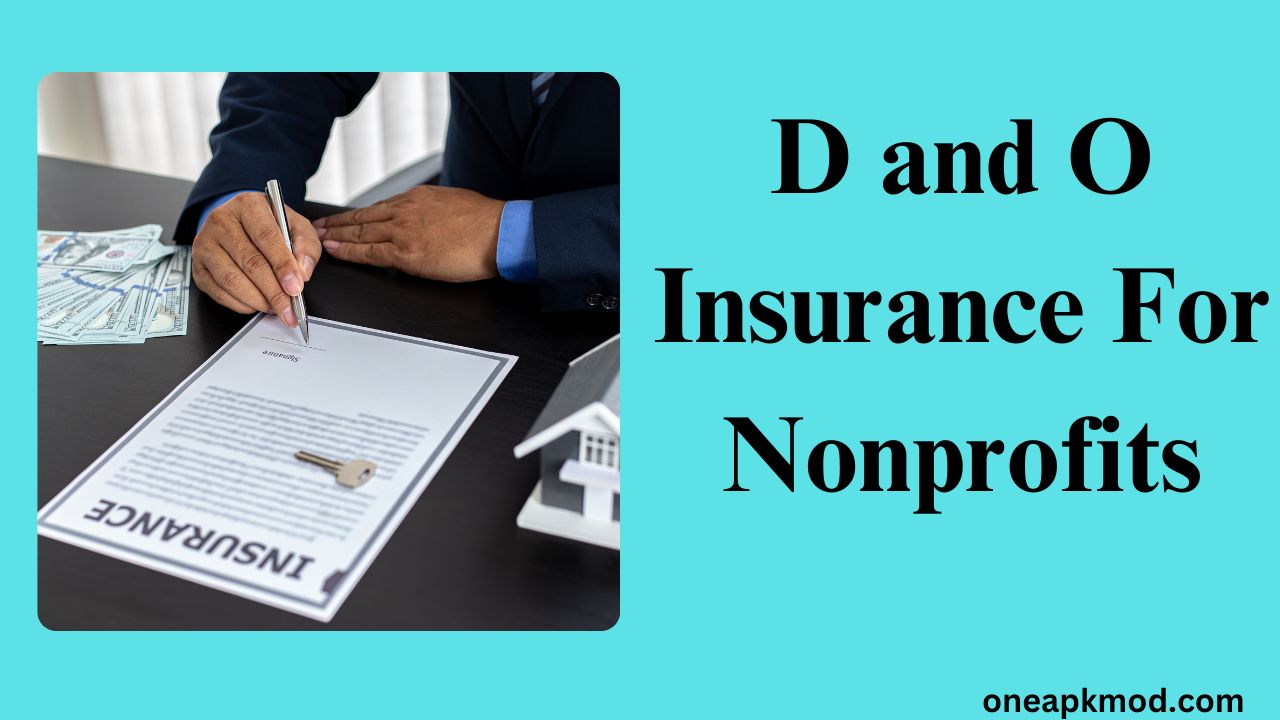D and O Insurance For Nonprofits
D and O Insurance For Nonprofits : Here’s a detailed, paragraph-based explanation of D&O insurance for nonprofits, written in clear, conversational language. I’ve included two relevant links in the paragraphs and suggested two AI-generated images to enhance understanding.
Introduction to D&O Insurance for Nonprofits
Nonprofit organizations are built on passion, purpose, and the drive to create positive change. However, even the most mission-driven nonprofits face risks, especially when it comes to leadership decisions. Directors and Officers (D&O) Insurance is a specialized policy designed to protect the individuals who guide these organizations board members, executives, and key volunteers from personal financial loss if they’re sued for actions taken in their roles. This type of insurance covers legal fees, settlements, and other costs arising from claims of mismanagement, errors, or breaches of duty. For nonprofits, which often rely on volunteer leaders and operate with limited resources, D&O insurance isn’t just a safety net it’s a critical tool for sustainability and attracting skilled leadership.
Why Nonprofits Need D&O Insurance
Nonprofits may assume their charitable status shields them from lawsuits, but this is far from true. Leaders of nonprofits can face legal challenges from multiple directions: employees, donors, beneficiaries, or even regulatory agencies. For example, a disgruntled employee might sue the board for wrongful termination, or a donor could allege financial mismanagement if funds are misallocated. According to a 2021 report by the National Council of Nonprofits, over 30% of nonprofits encountered governance-related legal disputes in the past decade. Without D&O insurance, board members might have to pay legal defense costs out of pocket, which could deter talented individuals from joining the organization. Additionally, while laws like the Volunteer Protection Act (VPA) offer some liability safeguards for volunteers, they don’t cover claims of gross negligence, discrimination, or breaches of fiduciary duty. D&O insurance fills these gaps, ensuring leaders can make bold decisions without fearing personal ruin.
What Does D&O Insurance Cover?
D&O insurance is structured to address three main areas of risk, often referred to as “Side A,” “Side B,” and “Side C” coverage. Side A protects individual leaders when the nonprofit cannot cover legal costs, such as in cases of bankruptcy. For instance, if a board member is personally sued for alleged mismanagement of funds, Side A would cover their defense fees. Side B reimburses the nonprofit itself when it pays legal costs on behalf of its leaders, such as settling an employment dispute. Side C extends protection to the organization as a whole if it’s sued alongside its leaders, such as in securities-related claims (though this is less common for nonprofits). Covered claims typically include allegations of breach of fiduciary duty, employment practices violations (e.g., discrimination or harassment), and defamation. For example, if a nonprofit’s CEO is accused of making false statements that harm a third party’s reputation, D&O insurance would step in to cover the legal fallout.
Common Exclusions in D&O Policies
While D&O insurance is comprehensive, it doesn’t cover every scenario. Policies often exclude intentional illegal acts, such as fraud or embezzlement. If a board member knowingly misuses funds for personal gain, the insurance won’t apply. Similarly, bodily injury or property damage claims (e.g., a slip-and-fall accident at an event) fall under general liability insurance, not D&O. Another key exclusion is “prior acts,” meaning lawsuits arising from incidents that occurred before the policy’s start date. Nonprofits should also note that D&O insurance usually doesn’t cover contractual disputes, such as broken agreements with vendors. Understanding these exclusions is crucial to avoiding gaps in coverage. For example, a nonprofit facing a lawsuit over a pre-existing employment dispute would need prior coverage or a policy with retroactive protection.
Cost of D&O Insurance for Nonprofits
The cost of D&O insurance varies widely depending on the nonprofit’s size, industry, and risk profile. Smaller nonprofits with budgets under $500,000 might pay between $500 and $1,500 annually, while larger organizations with complex operations could spend $5,000 or more. Factors influencing premiums include the organization’s financial stability, claims history, and the specific risks associated with its work. For example, a nonprofit providing healthcare services may face higher premiums due to regulatory risks, while an arts organization might pay less. To save costs, nonprofits can bundle D&O insurance with other policies, such as general liability or cyber insurance. Working with an insurance broker who specializes in nonprofitslike those at the Nonprofit Risk Management Center can help organizations find tailored, affordable coverage.
How to Choose the Right D&O Policy
Selecting the right D&O policy requires careful evaluation of the nonprofit’s unique risks. Start by conducting an internal audit: Have there been past lawsuits or complaints? Are leaders involved in high-stakes financial decisions? Next, review coverage limits. A small nonprofit might opt for a $1 million limit, but larger organizations may need $5 million or more. Nonprofits should also scrutinize policy exclusions and ask about retroactive dates to ensure past actions are covered. For example, if a board member resigns after a controversial decision, the policy should protect against claims arising from their tenure. Finally, compare insurers’ reputations and responsiveness. A provider with experience in the nonprofit sector will better understand challenges like volunteer-driven governance or grant compliance issues.
Debunking Myths About D&O Insurance
Many nonprofits underestimate their need for D&O insurance due to common misconceptions. One myth is that “small nonprofits don’t get sued.” In reality, even tiny organizations face risks, such as disputes with volunteers or allegations of mismanagement by donors. Another myth is that general liability insurance covers board members. While general liability policies address physical risks (e.g., property damage), they don’t protect against governance-related lawsuits. Lastly, some believe D&O insurance is too expensive, but the cost of a lawsuit—which can easily exceed $100,000 in legal fees far outweighs annual premiums.
Real-World Example: D&O Insurance in Action
In 2019, a mid-sized environmental nonprofit faced a lawsuit after a former employee alleged wrongful termination and gender discrimination. The board had voted to eliminate the employee’s position due to budget cuts, but the employee claimed the decision was retaliatory. Without D&O insurance, the nonprofit’s leaders would have been personally responsible for $200,000 in legal fees. Fortunately, their policy covered the costs, allowing the organization to settle the case without draining its reserves or jeopardizing its mission. Stories like this highlight why D&O insurance is a lifeline for nonprofits. Learn more about this case and others here.
Final Thoughts
D&O insurance is not just a formality it’s a strategic investment in a nonprofit’s longevity and leadership. By safeguarding board members and officers, organizations can attract skilled professionals, navigate complex decisions confidently, and focus on their mission without fear of legal catastrophes. Nonprofits should treat D&O insurance as part of their broader risk management strategy, alongside policies like general liability, cyber insurance, and employment practices coverage. For those unsure where to start, consulting a nonprofit-focused insurance broker can provide clarity and peace of mind.


